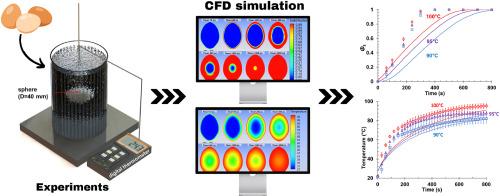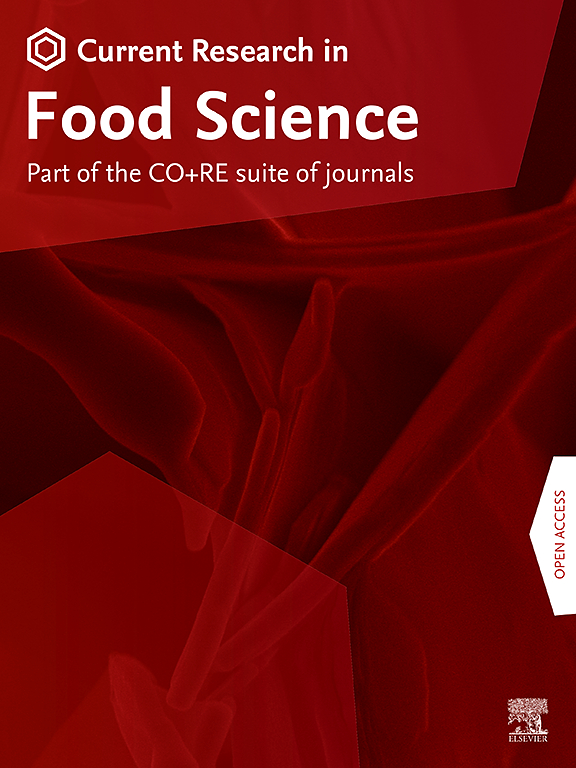利用计算流体动力学建立蛋白蒸煮和相变模型
IF 6.2
2区 农林科学
Q1 FOOD SCIENCE & TECHNOLOGY
引用次数: 0
摘要
本研究建议在计算流体动力学(CFD)模型中将流体蛋制品作为相变材料(PCM)建模,从而模拟鸡蛋的烹饪过程。研究人员制作了一个简化的物理原型,用于进行实验以调整数学模型的简化版本。随后,利用这些信息建立了一个真实鸡蛋的完整数学模型,并与实验数据进行了比较。确定了相变温度范围和初始化相变所需的能量。对两个模型的传热系数进行了估算。热加工和相变实验在 90 至 100 ℃ 的温度下进行。真鸡蛋模型与其他地方报告的实验数据进行了验证。模拟评估了煮鸡蛋所需的时间(800-1200 秒),显示了温度的均匀上升和相变。不过,也观察到模拟中可能存在高估的情况,这可能是由于量化技术的差异和烹饪过程不均匀造成的。本文章由计算机程序翻译,如有差异,请以英文原文为准。

Modeling of cooking and phase change of egg white using computational fluid dynamics
This study proposes simulating the cooking of eggs by modeling fluid egg products as phase-change materials (PCMs) within a computational fluid dynamics (CFD) model. A simplified physical prototype was built to conduct experiments to tune a simpler version of the mathematical model. The information was later used to build a complete mathematical model of a real egg that was compared with experimental data. Phase transition temperature ranges, and the energy required to initialize the transition were specified. Heat transfer coefficients were estimated for both models. Experiments for thermal processing and phase change were conducted at temperatures between 90 and 100 °C. The real egg model was validated with experimental data reported elsewhere. The simulations assess the time required to cook an egg (800–1200 s), demonstrating a homogeneous increase in temperature and phase transition. However, potential overestimation in simulations was observed, likely due to differences in quantifying techniques and non-uniform cooking processes.
求助全文
通过发布文献求助,成功后即可免费获取论文全文。
去求助
来源期刊

Current Research in Food Science
Agricultural and Biological Sciences-Food Science
CiteScore
7.40
自引率
3.20%
发文量
232
审稿时长
84 days
期刊介绍:
Current Research in Food Science is an international peer-reviewed journal dedicated to advancing the breadth of knowledge in the field of food science. It serves as a platform for publishing original research articles and short communications that encompass a wide array of topics, including food chemistry, physics, microbiology, nutrition, nutraceuticals, process and package engineering, materials science, food sustainability, and food security. By covering these diverse areas, the journal aims to provide a comprehensive source of the latest scientific findings and technological advancements that are shaping the future of the food industry. The journal's scope is designed to address the multidisciplinary nature of food science, reflecting its commitment to promoting innovation and ensuring the safety and quality of the food supply.
 求助内容:
求助内容: 应助结果提醒方式:
应助结果提醒方式:


